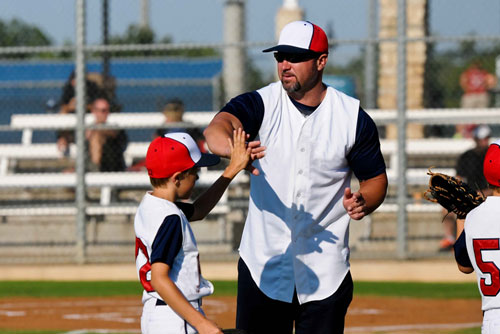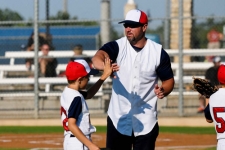
Follow the Little League guidelines and make sure your little leaguer is getting adequate rest.
Many people are unaware of the fact that the majority of ulnar collateral ligament reconstruction—or Tommy John—surgeries are for teenage athletes. While little leaguers are not quite teenagers, now is the time to take preventative action, as it’s the prime time for future injuries to fester.
Majority of elbow injuries are caused by overuse, even when baseball players follow pitching guidelines. An article in the published in the Journal of American Academy of Orthopaedic Surgeons highlighted a study which found a “strikingly high” number of arm problems in many players who follow little league pitching guidelines.
The study evaluated 26 Little League players age 10 to 13 years. Researchers had the subjects undergo pre and post-season bilateral elbow MRI, a physical examination and a questionnaire on a player’s arm pain and playing history. Player statistics on innings played, pitch counts and guideline compliance were also recorded. Subjects were excluded from the study if they could not tolerate the MRI, had a contradiction to an MRI or received a season-ending injury.
The study not only showed an increase in elbow abnormalities amongst the test subjects, but also supported findings which showed arm pain and injury were a result of total throws, not just pitches, and highlighted the necessity of following the Little League guidelines.
Pre-season MRI showed 9 of the 26 players had an abnormal MRI, but that number grew to 12 at the season’s conclusion. Of the 12 players with abnormal post-season MRI, 8 represented new findings or progression from the pre-season MRI and 4 players accumulated multiple or worsened abnormalities.
The postseason physical examinations also showed players lost shoulder internal rotation and gained external rotation, contributing to an average loss of 10.8 degrees of total arc motion. Additionally, players developed 1.4 degrees of elbow hyperextension showing a significant positive correlation between the total arc of motion change and distance of the ulnar collateral ligament to the medial epicondyle physis.
Researchers noted that both coaches and players showed “excellent” compliance with Little League mandatory guidelines, but not their non-mandatory recommendations. Against Little League recommendations, 8 percent of the test subjects played on multiple teams, 68 percent failed to rest from baseball for 3 months and 70 percent played year round.
Players who followed the guidelines showed healthier MRI results, but not enough to suggest the guidelines were adequate for preventing injury. 88 percent of the athletes with new or worsened MRI results violated at least one of the guidelines listed about, compared to 65 percent with healthy MRI results.
At the end of the day, this study showed that Little League guidelines do work, but have room for improvement, which will likely come with more time and research. In the meantime, parents can do their best to read-up on Little League guidelines and make sure their little athletes are getting adequate rest to prevent future arm issues. Keep in mind that Little League catchers are at more of a risk than pitchers due to the Little League guidelines being geared toward pitchers. Catchers throw more often than pitchers do during a game because there are no restrictions placed on players in that position.
As much as our athletes’ dream of playing at the professional level, parents need to keep in mind the odds of that. An injured arm affects children in multiple areas of life, from school to other sports, and can turn into a persistent problem for the rest of their life. Plus, an early Tommy John surgery only makes it that much harder for your child’s professional dreams to come true.
If you or your child have experienced elbow pain, please don’t hesitate to contact Prairie Orthopaedic. We will set you up with our Orthopedic specialists, Dr. Hurlbut and Dr. Byington.

